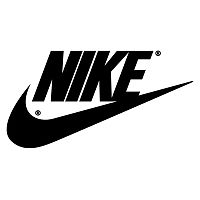 Nike retail sales have been dropping for the past three quarters in China, and executives at the company predict similar declines for the next two quarters. Investors claim not to be worried about the decline in earnings, but this did not stop Nike from replacing its top Chinese executive last May. Several other management positions in its Chinese division have been replaced, and Charlie Denson, Nike’s second in command, retired on July 1st after almost 35 years with the company.
Nike retail sales have been dropping for the past three quarters in China, and executives at the company predict similar declines for the next two quarters. Investors claim not to be worried about the decline in earnings, but this did not stop Nike from replacing its top Chinese executive last May. Several other management positions in its Chinese division have been replaced, and Charlie Denson, Nike’s second in command, retired on July 1st after almost 35 years with the company.
Last September, Nike blamed the initial slowdown on rising input costs, not on weaker economic conditions. Today, Nike’s best-selling lines of sports clothing, which had dominated the Chinese market for years, is being beaten out by its major competitors, Adidas and Hennes and Mauritz. The cheaper, hipper street wear of these other companies has left Nike wading through unsold inventory.
Analysts tend to agree that Nike’s image and clothing style does not meet the sophistication and proper fit for the nation’s shoppers. According to an analyst for Canaccord Financial Inc., Camilo Lyon, you have to be a “smarter retailer now.” Consumers are more “educated and global and sold to a lot more. Everybody is forced to become sharper.”
Nike executives had explained away the low retail sales by blaming the slow economy and shifting consumer interests. They maintained that their strategy is the right one to capitalize on the Chinese economy. Since 1982, when they entered the Chinese market, Nike became the best-selling sportswear by advocating a sports-centric achievement model. They sponsored sports leagues and athletes. They promoted heavily at the 2008 Olympics, which helped almost double sales to $2 billion by 2011.
Since last summer, however, Chinese inventory began piling up and retail sales began declining. The major hurdles on the back end are higher costs for materials and labor, which are mostly in China. The company has been trimming its supply chain and increasing costs to meet this challenge, and last year it sold off the lagging brands Cole Haan and Umbro.
Nike recently began to look at the bigger picture. When the demand for Nike’s brand image was so strong, specific consumer tastes didn’t matter as much, according to an analyst for Cowen & Co. Now, however, customers demand a tighter fit, and, the analyst continues, Nike has “realized there’s room for improvement.”
Adidas has been outselling Nike with cheaper, more fashionable sportswear, such as their youth-directed line of clothing NEO. China has become NEO’s biggest market. The success of this combination of fashion and sports indicates Adidas has a better understanding of the Chinese customer’s needs. The underlying impression is that hard-core sports has fallen out of favor, since Nike’s sportswear is being outsold by clothing lines that cater to lifestyle and fashion. In China, these concepts tend to win out over Nike’s sports-centric achievement message that anyone can aspire to great things. Academics and work ethic have become more important to the Chinese parents and the consumer culture.
Several analysts still recommend buying or holding Nike stock, despite the recent slump in retail sales. Nike’s overhaul of its Chinese management team and its recent efforts to remake and upgrade its merchandise suggest a potential rebound. Donald Blair, Nike’s CFO, said that sales are already growing at Nike’s largest retailers. “We still have a lot of work to do,” Blair said.
Some analysts advise a neutral position. Though Nike’s North America ratings remain strong, the Chinese market continues to pose challenges. Things are showing signs of improvement, but China’s retail sales may not turn around any time soon.